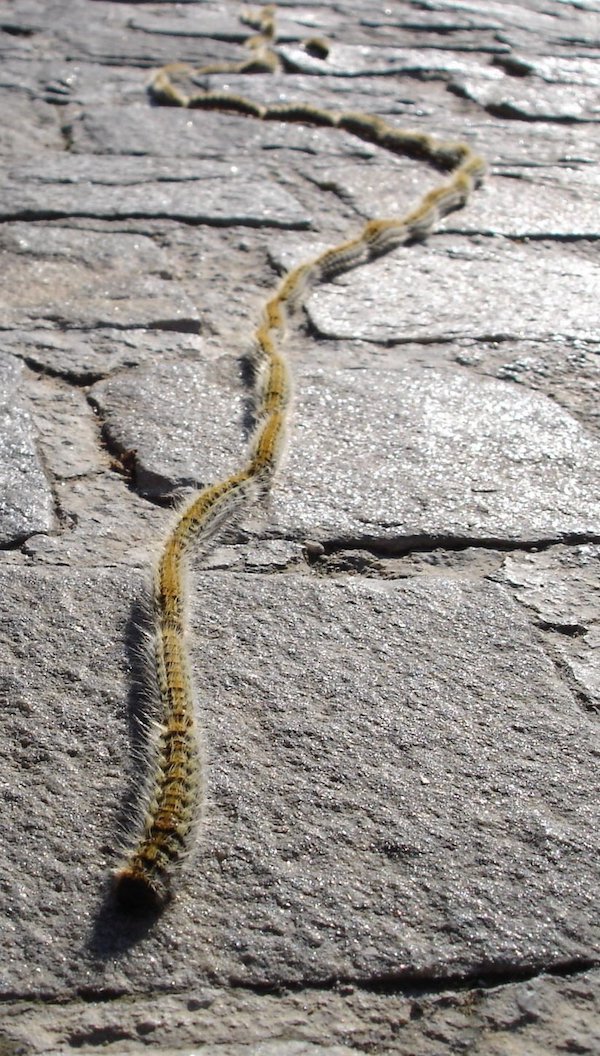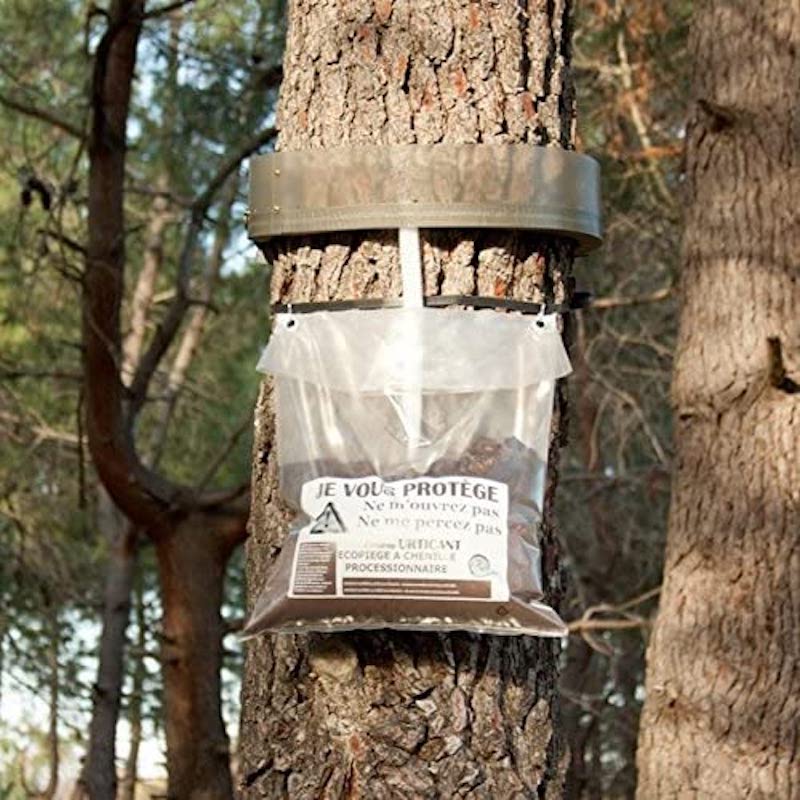Our Blog - La chenille processionnaire du pin
With the weather and the curfew, we haven't done any traveling. The weather is getting better so maybe this weekend we will take Lucy to a lake about an hour south of Toulouse. However, with the weather getting nicer, we also now have to be worried about the chenille processionnaire du pin, or pine processionary caterpiller. Most of you now are shaking your heads wondering what I am talking about, since most Americans have never heard of these. We hadn't either until we moved here and got a dog. Most dog owners or dog lovers know about them here, and they are quick to tell you if they have seen any near you when they see you walking a dog.
So I'll start with what they are .. I've included a picture here from Wikipedia, and you can see how they get their name. These caterpillars are one stage in the lifecycle of a moth called "pine processionary moths". They normally live for only 1 year and can wreck havoc on pine trees as well as animals.

The adult moths lay their eggs near the tops of pine trees in large silken nests. When these eggs hatch, they eat the pine needles which cause damage (sometimes death) to the pine trees. These caterpillars are responsible for most of the defoliation of southern Europe according to one source. The caterpillars can completely defoliate trees if large quantities are present.

Then in early Spring (normally the beginning of April but we start seeing them in mid-to-late February here), they head down the tree trunks to burrow underground. They always travel in a procession and this is how they get their name. They look like this brown line on the pavement or in the grass. If you don't know anything about these guys, they look somewhat cute and you just go about your merry business. But they are actually an irritation for people and a real danger for dogs. As a defense mechanism, the caterpillar has tiny barbed hairs covering their body which can become irritating to the skin and, during the later stages of the larvae, the hairs can be launched like harpoons if threatened. The hairs, when broken, release a toxin that can cause allergic reactions to the hands, neck, and face. They can also cause, in rare cases, eye and respiratory problems. A bigger problem is for a dog. If a dog happens to get it in their mouth, these toxins end up on their tongue. This can happen if the dog licks the caterpillar itself or if the hairs of the caterpillar get on the skin and the dog then licks the irritated skin. If it isn't treated very quickly, the dog risks necrosis of the tongue, making it impossible to eat.

They stay underground until summer when they come out as adult moths. During the 1-2 days that the adults live, they mate, lay more eggs in trees, and then die.
So what do you do about them? There are several options. One is to remove the nests from the tops of the trees and burn them during the winter. However, contact with the nests must be done carefully and it isn't always that easy to get to them in very tall trees. Once you remove the nests, you would normally burn them to kill the larvae inside. Probably the one we see most often is the use of an "Ecopiège" or "collar trap". These traps are put around the tree trunk of the pine trees and they help prevent the caterpillars from descending down the trunk. As they come down the trunk, they arrive at the collar and cannot go any further down the trunk. The collar directs them into a bag suspended underneath, which is filled with soil. Once they are inside, they believe that they have gotten to the ground and bury themselves in the soil to continue their lifecycle.

Unfortunately, we live in an area that tends to have lots of these little pests. There is a pine tree just outside of our apartment building, as well as several in the park that we take Lucy into. We now know that this is the time of the year that we have to be extra vigilant when we take Lucy for her walks. One of the problems with attempting to control them is that in many cases, pesticides against these caterpillars cannot be used. It is a bit cool still here for them to come out and head down the trees, but when we get a bit of wind, we need to be on the lookout because some of them can fall from the nest when it gets a bit windy.
Here is an article (in English) that is from a French magazine, talking about these hairy little caterpillars that are now on the move. The article is from 2017, but the information is still valuable.